.
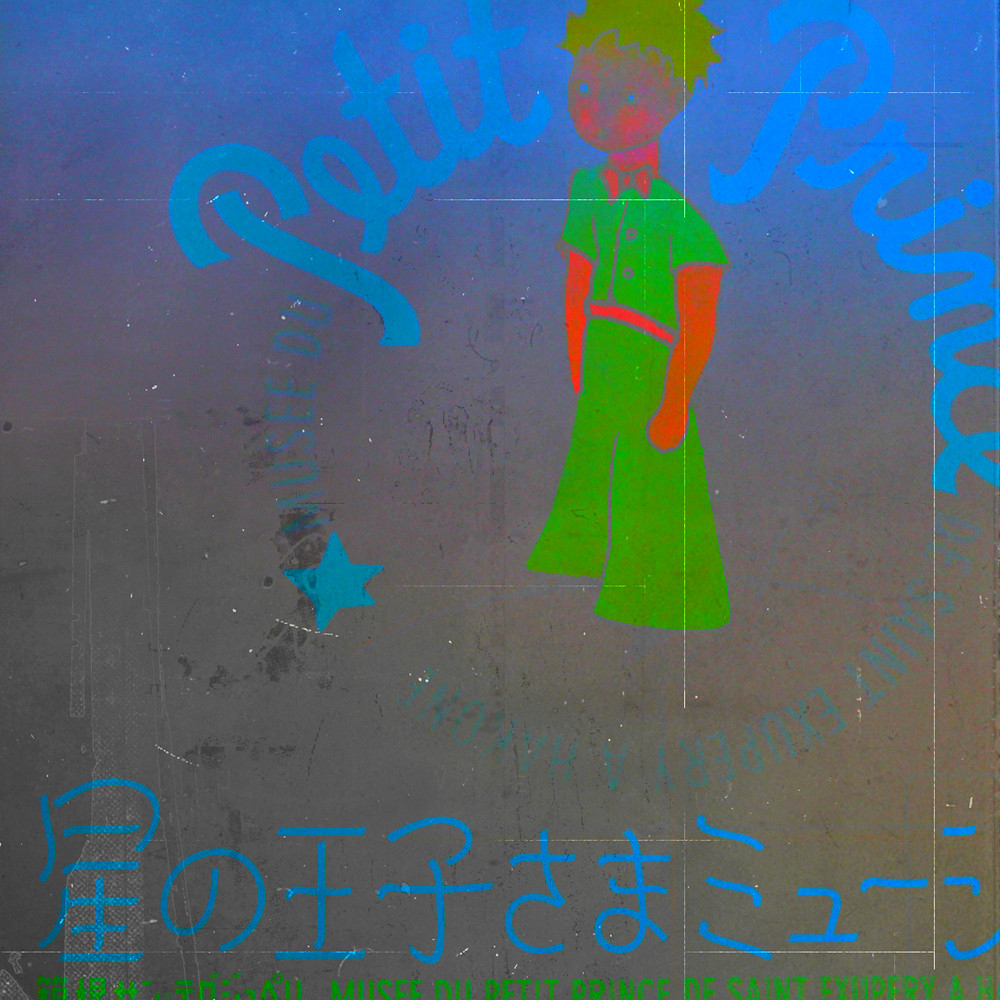
I should tolerate the closeness of 2-3 caterpillars, if I want to get to to know butterflies: textured photo by Marie Wintzer, 26 November 2011
It was then that the fox appeared.
"Good morning," said the fox.
"Good morning," the little prince responded politely, although when he turned around he saw nothing.
"I am right here," the voice said, "under the apple tree."
"Who are you?" asked the little prince, and added, "You are very pretty to look at."
"I am a fox," said the fox.
"Come and play with me," proposed the little prince. "I am so unhappy."
"I cannot play with you," the fox said. "I am not tamed."
"Ah! Please excuse me," said the little prince.

But, after some thought, he added:
"What does that mean -- 'tame'?"
"You do not live here," said the fox. "What is it that you are looking for?"
"I am looking for men," said the little prince. "What does that mean -- 'tame'?"
"Men," said the fox. "They have guns, and they hunt. It is very
disturbing. They also raise chickens. These are their only interests.
Are you looking for chickens?"
"No," said the little prince. "I am looking for friends. What does that mean -- 'tame'?"
"It is an act too often neglected," said the fox. "It means to establish ties."
"'To establish ties'?"
"Just that," said the fox. "To me, you are still nothing more than a
little boy who is just like a hundred thousand other little boys. And I
have no need of you. And you, on your part, have no need of me. To
you, I am nothing more than a fox like a hundred thousand other foxes. But if you tame me, then we shall need each
other. To me, you will be unique in all the world. To you, I shall be
unique in all the world..."
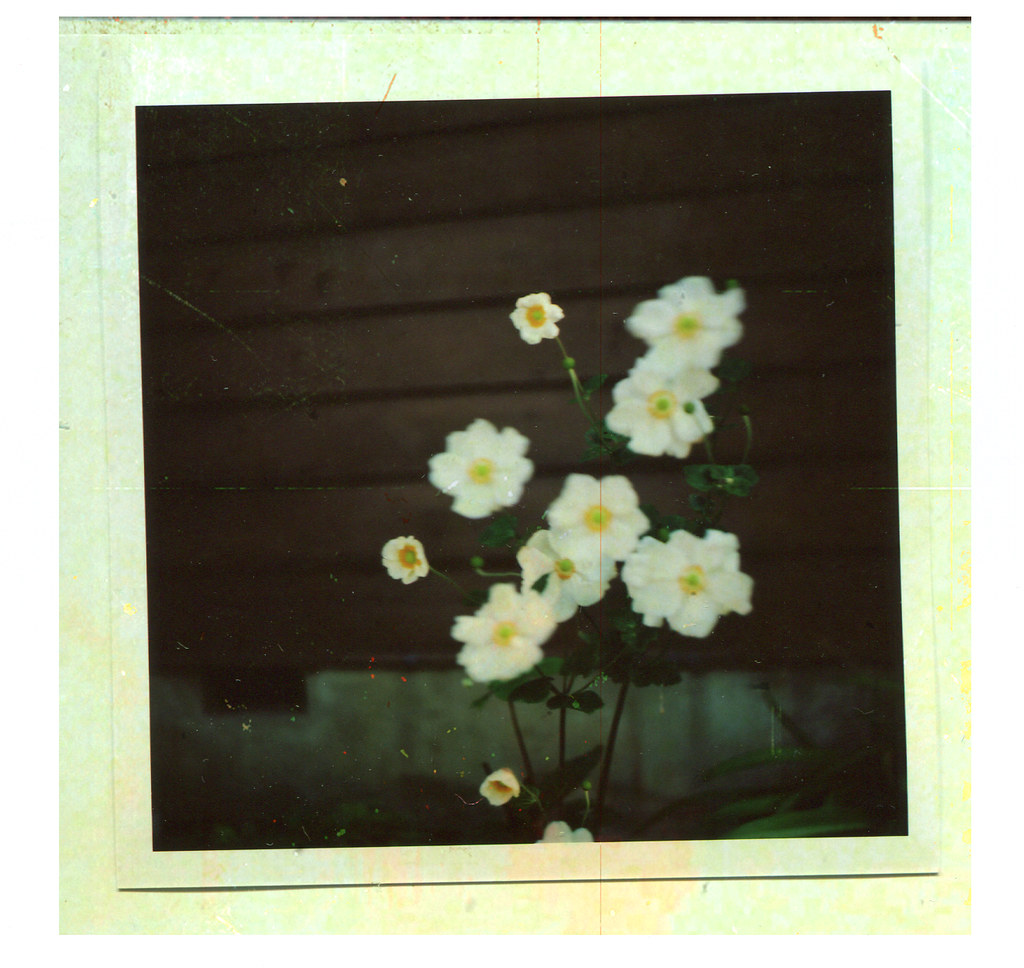
Il y a une fleur (Je commence à comprendre, dit le petit prince. Il y a une fleur... je
crois qu'elle m'a apprivoisé... C'est possible, dit le renard. On voit
sur la Terre toutes sortes de choses...): textured photo by Marie Wintzer, 15 December 2011
"I am beginning to understand," said the little prince. "There is a flower... I think that she has tamed me..."
"It is possible," said the fox. "On the Earth one sees all sorts of things."
"Oh, but this is not on the Earth!" said the little prince.
The fox seemed perplexed, and very curious.
"On another planet?"
"Yes."

Tarfaya: photo by dimworld (Dimitri), 12 December 2007
"Are there hunters on this planet?"
"No."
"Ah, that is interesting! Are there chickens?"
"No."
"Nothing is perfect," sighed the fox.
But he came back to his idea.
"My life is very monotonous," the fox said. "I hunt chickens; men hunt
me. All the chickens are just alike, and all the men are just alike.
And, in consequence, I am a little bored. But if you tame me, it will
be as if the sun came to shine on my life. I shall know the sound of a step that will be different from all the
others. Other steps send me hurrying back underneath the ground. Yours
will call me, like music, out of my burrow. And then look: you see the
grain-fields down yonder? I do not eat bread. Wheat is of no use to me. The wheat fields have nothing to
say to me. And that is sad. But you have hair that is the colour of
gold. Think how wonderful that will be when you have tamed me! The
grain, which is also golden, will bring me back the thought of you. And I shall love to listen to the wind in the
wheat..."
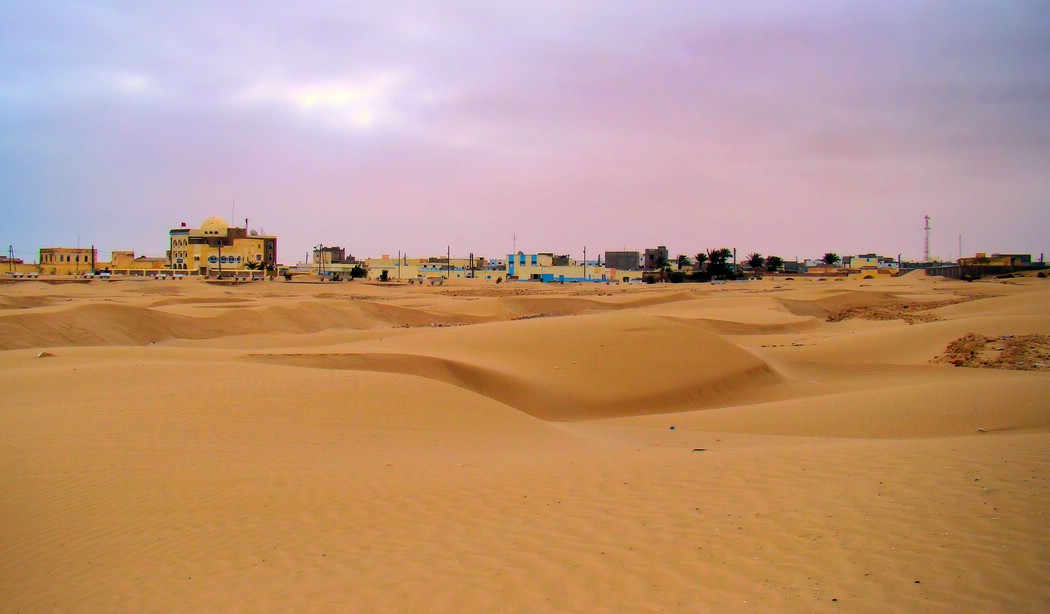
Tarfaya, on the Atlantic coast of Morocco: photo by Bjørn Christian Tørrissen, April 2011
The fox gazed at the little prince, for a long time.
"Please -- tame me!" he said.
"I want to, very much," the little prince replied. "But I have not much
time. I have friends to discover, and a great many things to
understand."

Blowing sand over the shoreline, Tarfaya, Morocco: photo by Bjørn Christian Tørrissen, April 2011
"One only understands the things that one tames," said the fox. "Men
have no more time to understand anything. They buy things all ready
made at the shops. But there is no shop anywhere where one can buy
friendship, and so men have no friends any more. If you want a friend, tame me..."
"What must I do, to tame you?" asked the little prince.
"You must be very patient," replied the fox. "First you will sit down
at a little distance from me -- like that -- in the grass. I shall look
at you out of the corner of my eye, and you will say nothing. Words are
the source of misunderstandings. But you will sit a little closer to me, every day..."

The next day the little prince came back.
"It would have been better to come back at the same hour," said the fox.
"If, for example, you come at four o'clock in the afternoon, then at
three o'clock I shall begin to be happy. I shall feel happier and
happier as the hour advances. At four o'clock, I shall already be worrying and jumping about. I shall show you how
happy I am! But if you come at just any time, I shall never know at
what hour my heart is to be ready to greet you... One must observe the
proper rites..."
"What is a rite?" asked the little prince.
"Those also are actions too often neglected," said the fox. "They are
what make one day different from other days, one hour from other hours.
There is a rite, for example, among my hunters. Every Thursday they
dance with the village girls. So Thursday
is a wonderful day for me! I can take a walk as far as the vineyards.
But if the hunters danced at just any time, every day would be like
every other day, and I should never have any vacation at all."
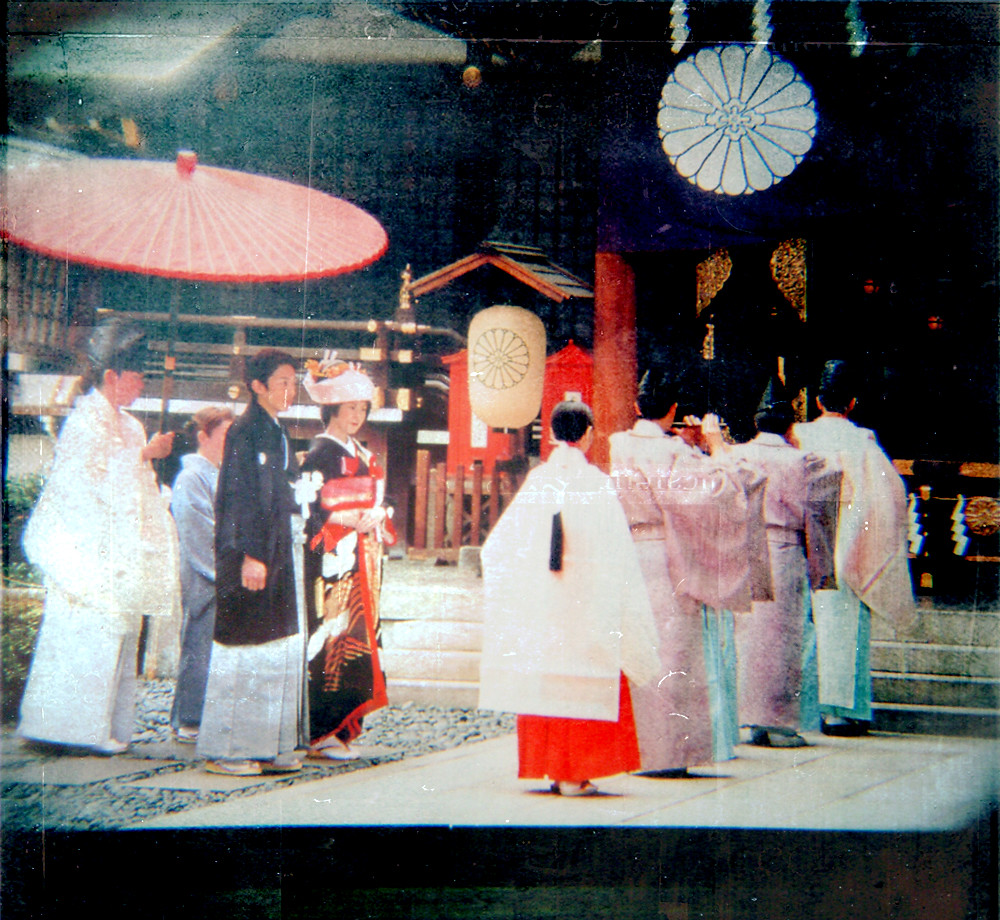
And when the hour of his departure grew near..."Ah," said the fox, "I shall cry."
"It is your own fault," said the little prince. "I never wished you any sort of harm; but you wanted me to tame you..."
-------
(Holga toy camera - texture): textured photo by Marie Wintzer, 22 October 2011
(Holga toy camera - texture): textured photo by Marie Wintzer, 22 October 2011
So the little prince tamed the fox. And when the hour of his departure drew near --
"Ah," said the fox, "I shall cry."
"It is your own fault," said the little prince. "I never wished you any sort of harm; but you wanted me to tame you..."
"Yes, that is so," said the fox.
"But now you are going to cry!" said the little prince.
"Yes, that is so," said the fox.
"Then it has done you no good at all!"
"It has done me good," said the fox, "because of the color of the wheat fields." And then he added:
"Go and look again at the roses. You will understand now that yours is
unique in all the world. Then come back to say goodbye to me, and I
will make you a present of a secret."
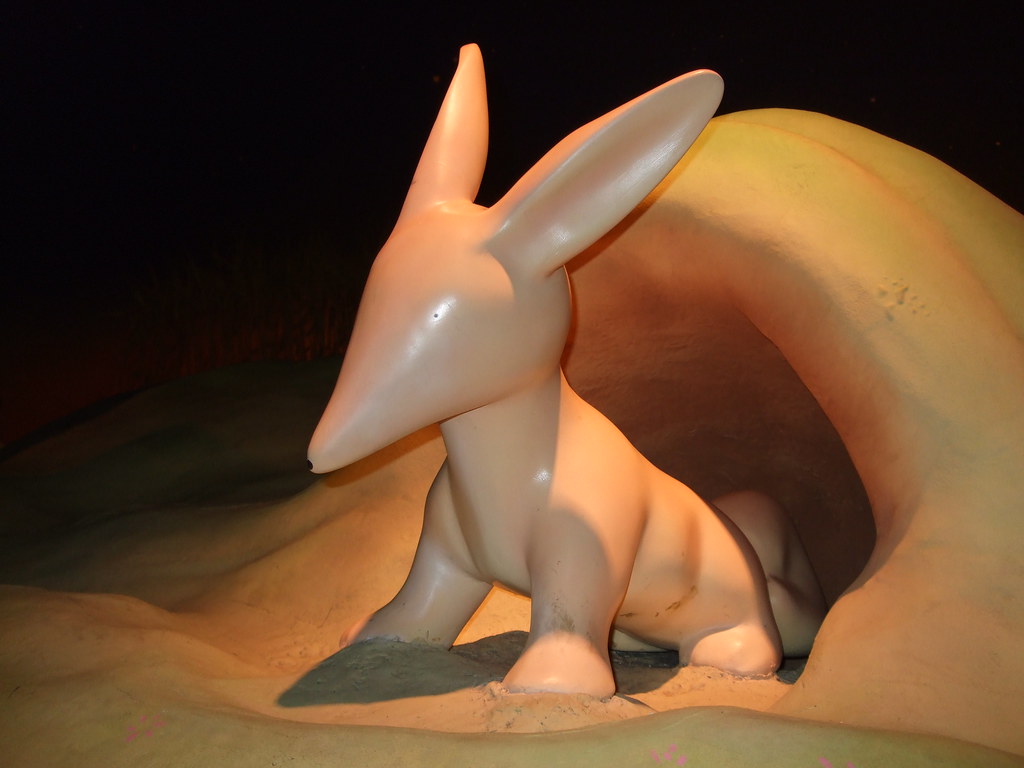
Le Renard (The Fox) at the Museum of The Little Prince, Hakone, Japan: photo by Arnaud Malon, 8 October 2007
The little prince went away, to look again at the roses.
"You are not at all like my rose," he said. "As yet you are nothing.
No one has tamed you, and you have tamed no one. You are like my fox
when I first knew him. He was only a fox like a hundred thousand other
foxes. But I have made him my friend, and
now he is unique in all the world."
And the roses were very much embarrassed.

Tarfaya: photo by dimworld (Dimitri), 12 December 2007
"You are beautiful, but you are empty," he went on. "One could not die
for you. To be sure, an ordinary passerby would think that my rose
looked just like you -- the rose that belongs to me. But in herself
alone she is more important than all the hundreds of you other roses: because it is she that I have watered; because it
is she that I have put under the glass globe; because it is she that I
have sheltered behind the screen; because it is for her that I have
killed the caterpillars (except the two or
three that we saved to become butterflies); because it is she that I
have listened to, when she grumbled, or boasted, or even sometimes when
she said nothing. Because she is my rose."
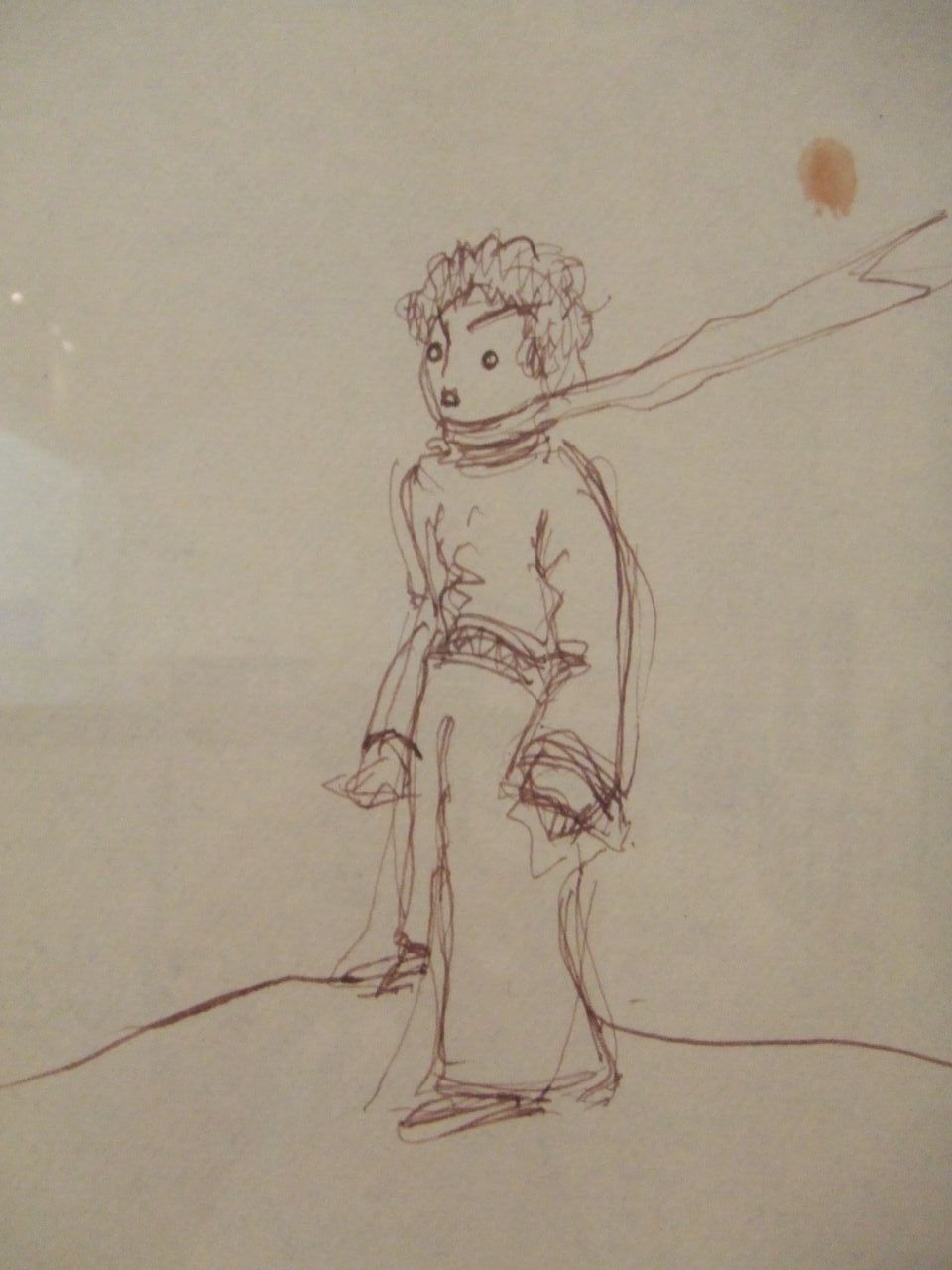
Tarfaya: image by dimworld (Dimitri), 12 December 2007
And he went back to meet the fox.
"Goodbye," he said.
"Goodbye," said the fox. "And now here is my secret, a very simple
secret: It is only with the heart that one can see rightly; what is
essential is invisible to the eye."
"What is essential is invisible to the eye," the little prince repeated, so that he would be sure to remember.
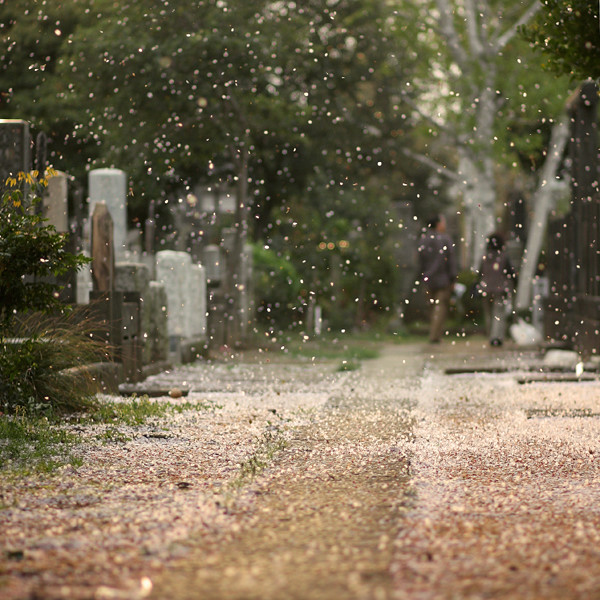
In another world: Sakura storm at Yanaka cemetery (Tokyo): photo by Marie Wintzer
"It is the time you have wasted for your rose that makes your rose so important."
"It is the time I have wasted for my rose --" said the little prince, so that he would be sure to remember.
"Men have forgotten this truth," said the fox. "But you must not forget
it. You become responsible, forever, for what you have tamed. You are
responsible for your rose..."
"I am responsible for my rose," the little prince repeated, so that he would be sure to remember.
*
Grandidier's Baobab (Adansonia grandidieri) near Morondava, Madagascar: photo by Bernard Gagnon, 14 March 2007
As each day passed I would learn, in our talk, something about the
little prince's planet, his departure from it, his journey. The
information would come very slowly, as it might chance to fall from his
thoughts. It was in this way that I heard, on the third day, about the
catastrophe of the baobabs.
This time, once more, I had the sheep to thank for it. For the little
prince asked me abruptly -- as if seized by a grave doubt -- "It is true,
isn't it, that sheep eat little bushes?"
"Yes, that is true."
"Ah! I am glad!"
I did not understand why it was so important that sheep should eat little bushes. But the little prince added:
"Then it follows that they also eat baobabs?"
I pointed out to the little prince that baobabs were not little bushes,
but, on the contrary, trees as big as castles; and that even if he took a
whole herd of elephants away with him, the herd would not eat up one
single baobab.

The idea of the herd of elephants made the little prince laugh.
"We would have to put them one on top of the other," he said.

Family of African Bush Elephants (Loxodonta africana) taking a mud bath in Tsavo East National Park, Kenya: photo by Mgiganteus, 11 July 2007
But he made a wise comment:
"Before they grow so big, the baobabs start out by being little."
Avenue of the Baobabs. Grandidier's Baobabs (Adansonia grandidieri) near Morondava, Madgascar: photo by Bernard Gagnon, 14 March 2007
"That is strictly correct," I said. "But why do you want the sheep to eat the little baobabs?"
He answered me at once, "Oh, come, come!", as if he were speaking of
something that was self-evident. And I was obliged to make a great
mental effort to solve this problem, without any assistance.
Indeed, as I learned, there were on the planet where the little prince
lived -- as on all planets -- good plants and bad plants. In consequence,
there were good seeds from good plants, and bad seeds from bad plants.
But seeds are invisible. They sleep deep in the heart of the earth's
darkness, until some one among them is seized with the desire to awaken.
Then this little seed will stretch itself and begin -- timidly at
first -- to push a charming little sprig inoffensively upward toward the
sun. If it is only a sprout of radish or the sprig of a rose-bush, one
would let it grow wherever it might wish. But when it is a bad plant,
one must destroy it as soon as possible, the very first instant that one
recognizes it.
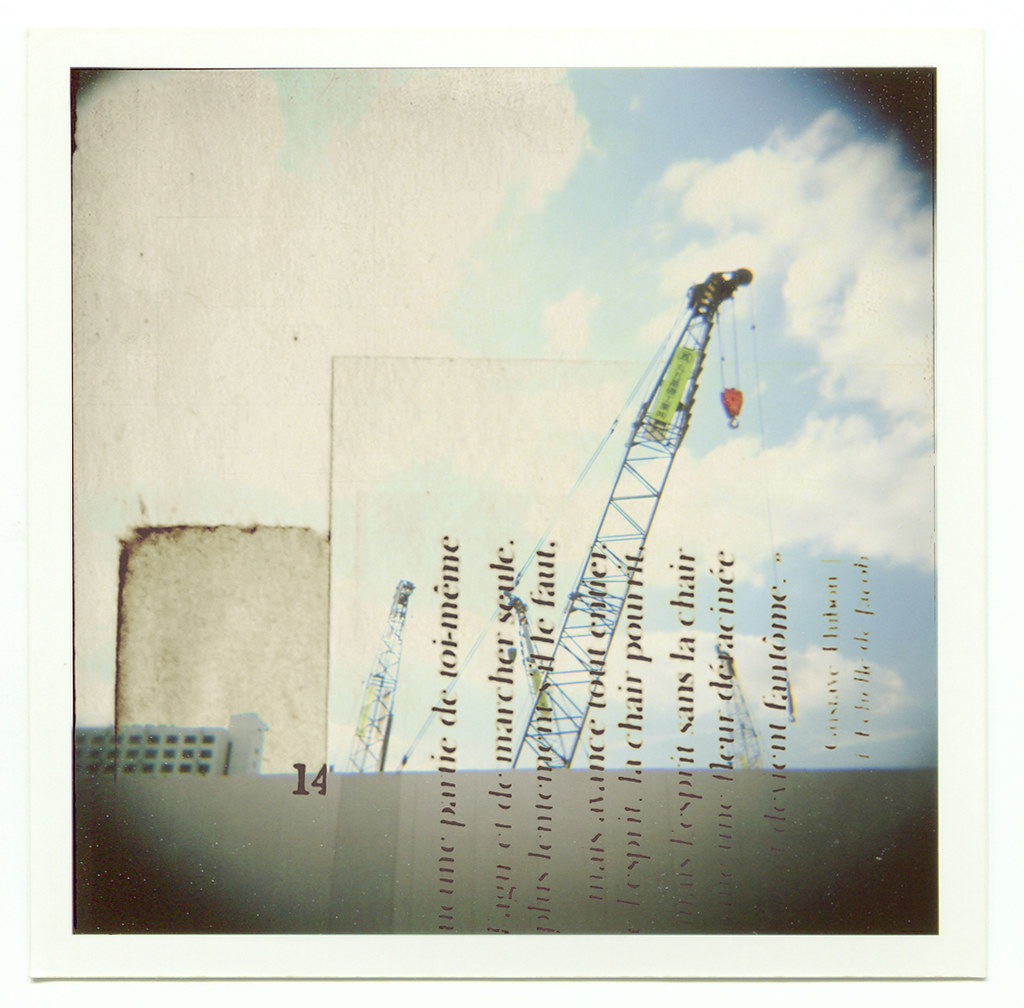
"The soil of that planet was infested with them. A baobab is something you will never, never be
able to get rid of if you attend to it too late. It spreads over the
entire planet. It bores clear through it with its roots. And if the
planet is too small, and the baobabs are too many, they split it in
pieces...": from The LIttle Prince: textured photo by Marie Wintzer, 16 October 2011
Now there were some terrible seeds on the planet that was the home of
the little prince; and these were the seeds of the baobab. The soil of
that planet was infested with them. A baobab is something you will
never, never be able to get rid of if you attend to it too late. It
spreads over the entire planet. It bores clear through it with its
roots. And if the planet is too small, and the baobabs are too many,
they split it in pieces...

"It is a question of discipline," the little prince said to me later on. "When you've finished your own toilet in the morning, then it is time to attend to the toilet of your planet, just so, with the greatest care. You must see to it that you pull up regularly all the baobabs, at the very first moment when they can be distinguished from the rosebushes which they resemble so closely in their earliest youth. It is very tedious work," the little prince added, "but very easy."
Grandidier's Baobabs (Adansonia grandidieri) near Morondava, Madgascar: photo by Bernard Gagnon, 14 March 2007
And one day he said to me: "You ought to make a beautiful drawing, so
that the children where you live can see exactly how all this is. That
would be very useful to them if they were to travel some day.
Sometimes," he added, "there is no harm in putting off a piece of work
until another day. But when it is a matter of baobabs, that always
means a catastrophe. I knew a planet that was inhabited by a lazy man.
He neglected three little bushes..."

So, as the little prince described it to me, I have made a drawing of
that planet. I do not much like to take the tone of a moralist. But
the danger of the baobabs is so little understood, and such considerable
risks would be run by anyone who might get lost on an asteroid, that
for once I am breaking through my reserve. "Children," I say plainly,
"watch out for the baobabs!"
My friends, like myself, have been skirting this danger for a long time,
without ever knowing it; and so it is for them that I have worked so
hard over this drawing. The lesson which I pass on by this means is
worth all the trouble it has cost me.
Perhaps you will ask me, "Why are there no other drawing in this book as
magnificent and impressive as this drawing of the baobabs?"
The reply is simple. I have tried. But with the others I have not been
successful. When I made the drawing of the baobabs I was carried
beyond myself by the inspiring force of urgent necessity.
![Sunset at the Avenue of the Baobab trees 4955998343 2b4170b300 b Baobab The Upside Down Tree [25 Pics]](http://farm5.static.flickr.com/4145/4955998343_2b4170b300_b.jpg)
Sunset showing at the Avenue of the Baobab, Morondava, Madagascar: photo by copepedo, 12 August 2010
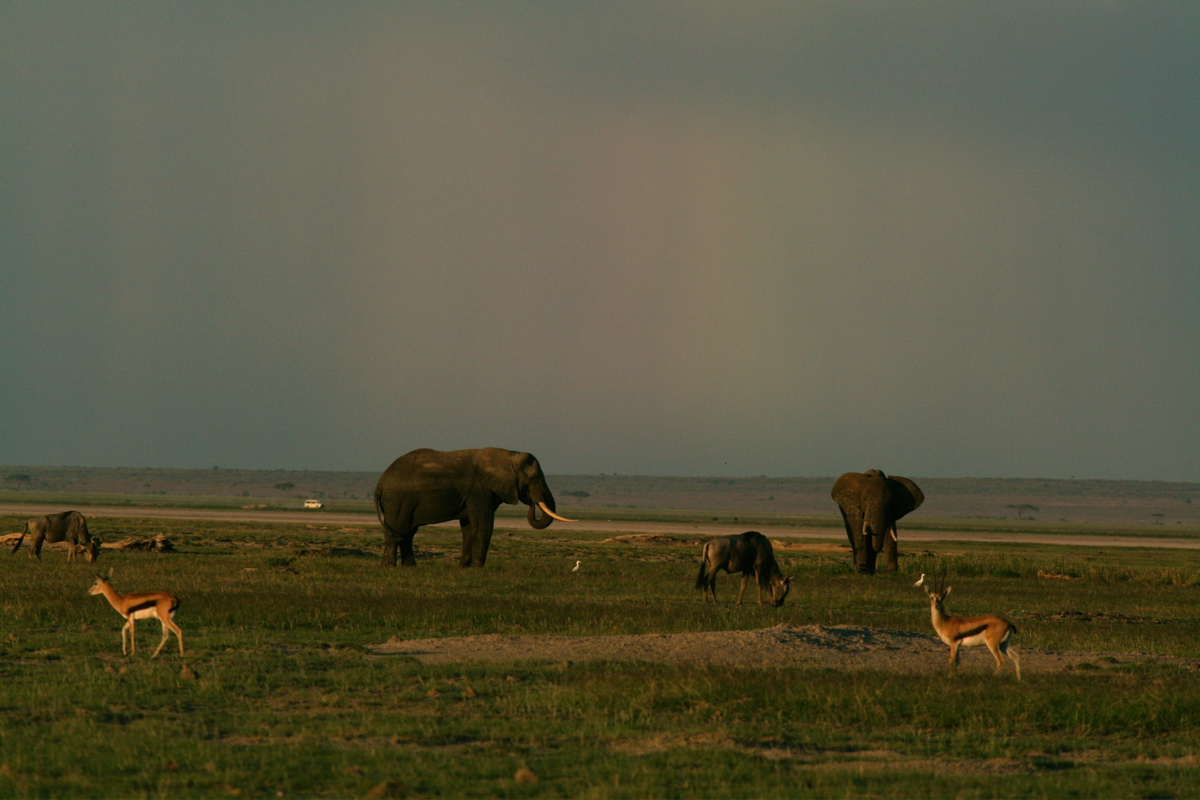
Elephant, antelope and rainbow, Rift Valley, Kenya: photo by nijaba, 31 December 2007
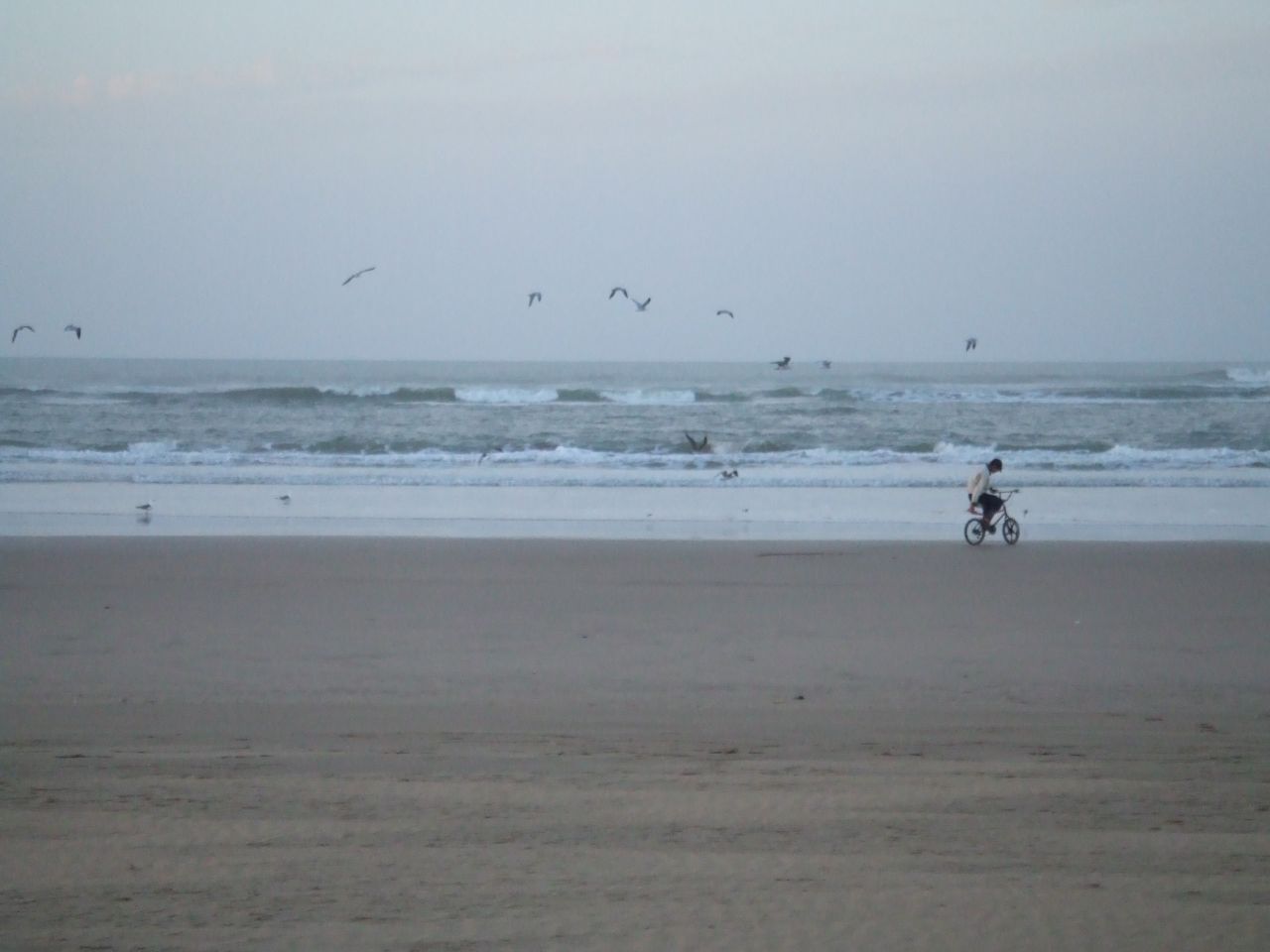
Tarfaya: photo by dimworld (Dimitri), 12 December 2007
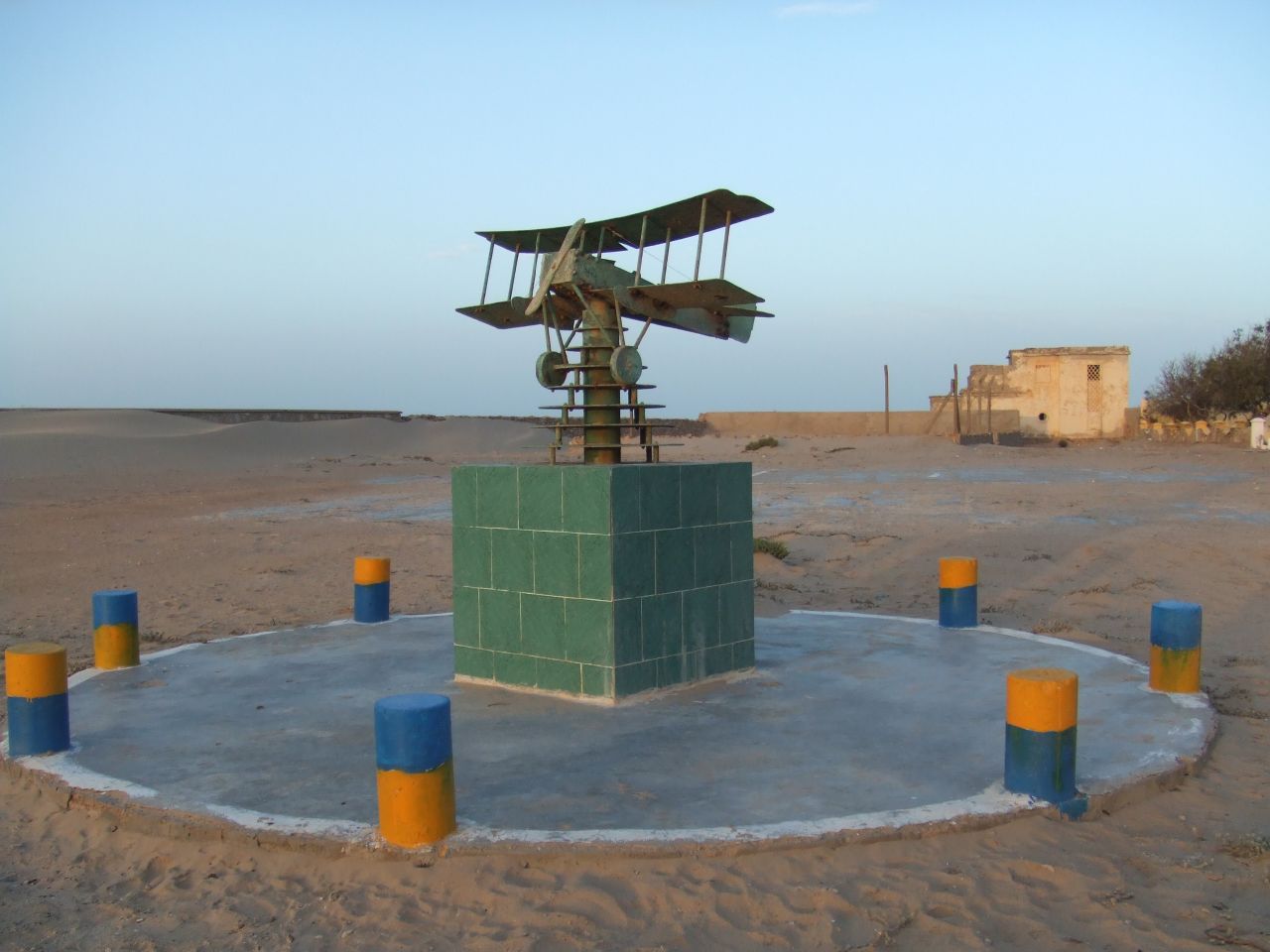
Musée Antoine de Saint-Exupéry Tarfaya, Morocco: photo by dimworld (Dimitri), 12 December 2007
Le Petit Prince (The Little Prince): Antoine de Saint Exupéry (1900-1944), 1943, excerpts from Chapter 22 and Chapter 5, with watercolour illustrations by the author



![Adansonia grandidieri, baobab from Madagascar, picture taken near Morondava Adansonia grandidieri02 Baobab The Upside Down Tree [25 Pics]](http://upload.wikimedia.org/wikipedia/commons/a/a1/Adansonia_grandidieri02.jpg)
![Adansonia grandidieri, baobab from Madagascar, picture taken near Morondava, March 14, 2007 Adansonia grandidieri03 Baobab The Upside Down Tree [25 Pics]](http://upload.wikimedia.org/wikipedia/commons/c/cb/Adansonia_grandidieri03.jpg)



19 comments:
This is such a beautiful post, Tom.
Nothing wrong with caterpillars.
Artur.
Thank you very much, Artur, and it's great to hear from you. Couldn't agree more, about the caterpillars.
And in the time it's taken me to say that the Fennec Fox will have had time to sing its morning song.
(And every other Fennec Fox for miles will of course have been equipped hear it!)
Oh, I love this.
There were foxes on the farm where I grew up, red foxes, and now there are foxes in Maine. I see them in the meadow as the sun is coming up--and I swear they feel me looking at them-feel me picking up the camera, and they are gone.
Le Petit Prince! Talk about a present! Today is a special day for me (well, not all that special), and to open your blog on THAT particular post, Tom, is quite something. I can't say much more because I'm hunting for the tissue box right now but..... thank you so much. I'll come back for more reads and wonderful pictures.
Are there chickens?
No.
Nothing is perfect.
But this, somehow, is perfect to me. Thank you, Tom.
I was thinking about the caterpillars. Maybe we need them. They might look ugly as they are (even that is debatable) but they are a necessary stage on the way to something beautiful. Maybe they teach us patience. Things might not always look as beautiful as we wish they were. Most of the time they don't, anyway. But if we could learn to tame our caterpillars....
Merci pour cette composition ! C'est curieux, depuis l'enfance je suis toujours restée sur le seuil de cette histoire devenue un classique scolaire incontournable ici, et c'est bien la première fois que je rentre à l'intérieur des phrases et en découvre l'invitation... comme quoi, votre blog est terriblement efficace !
I just wanted to say I came back to this blog many times today. Terriblement efficace, oh oui!
Before another word... joyeux anniversaire, chère Marie!
I was much taken with the Fennec Fox. Saint-Exupéry got to know these animals during his stint as an Aeropostale pilot flying in and out of Tarfaya, at the edge of the Sahara on the Atlantic coast.
"The fennec fox or fennec (Vulpes zerda) is a small nocturnal fox found in the Sahara of North Africa. Its most distinctive feature is its unusually large ears, which serve to dissipate heat. Its name comes from the Arabic word فنك (fanak), which means fox, and the species name zerda comes from the Greek word xeros which means dry, referring to the fox's habitat. The fennec is the smallest species of canid in the world. Its coat, ears, and kidney functions have adapted to high-temperature, low-water, desert environments. In addition, its hearing is sensitive enough to hear prey moving underground. It mainly eats insects, small mammals, and birds.
"The fennec has a life span of up to 14 years in captivity. Its main predators are the African varieties of eagle owl. Families of fennecs dig out dens in sand for habitation and protection, which can be as large as 120 m2 (1,292 sq ft) and adjoin the dens of other families.
"The fennec fox weighs about 1.5–3.5 lb (0.68–1.6 kg), with a body length of between 24–41 cm (9–16 in); it is around 20.3 cm (8 in) tall. The tail has a black tip and is 18–31 cm (7–12 in) long, while the ears can be between 10–15 cm (3.9–5.9 in) long.
"The coat is often a cream color and fluffy, which deflects heat during the day and keeps the fox warm at night. The fennec's characteristic ears are the largest among all foxes relative to body size, and serve to dissipate heat, as they have many blood vessels close to the skin. The ears of a fennec are sensitive enough to hear prey that may be underground; the soles of its feet are protected from the hot desert sand by thick fur."
There is a two-part BBC Planet Earth documentary featuring these wonderful little creatures. I've only been able to find an online posting of Fennec Fox: Part Two.
The video is fascinating, particularly in showing these animals in their native environment. (Photographing animals in the wild is, as Nin suggests, not an easy thing.) There are are dozens of other, far more frequently-viewed videos of fennecs kept as exotic pets. The fennecs in the latter clips tend to appear manic, and they growl a lot. Constraint and captivity will do that to a free-spirited wild creature.
A close-up look reveals the seriousness of the species. This one, far away from its native habitat and a captive in Japan, has the hand of a human round its throat. That would tend to increase the seriousness, one supposes.
Caaya, je suis heureux d'entendre que vous avez apprécié cette fantasia sur une fantasia -- Le Petit Prince.
La personne extrêmement talentueuse qui a fait la "photo texturé» en haut (ainsi que quatre autres personnes, ci-dessous) est très épris de ce livre, et se lit comme une sorte de parabole poétique. Elle est un neuroscientifique au Japon, mais provient de l'Alsace, et je pense que son histoire personnelle avec LPP, peut-être pas contrairement à la vôtre, remonte à son enfance.
Moi-même, j'avais connu l'histoire depuis longtemps, mais il n'était pas jusqu'à ce qu'il soit instruit par les conseils et les idées dans l'interprétation de Marie, que j'avais commencé à apprécier plus pleinement sa qualité de "romance" au sens ancien -- un conte d'amour et de courage, d'événements improbables et éventualités miraculeuses, et des significations «grands» cachés dans les petits détails de la narration.
Le passage sur le baobab (qui vient en réalité du début du livre, mais je l'ai placé à la fin, ici), peut sembler un peu problématique, car bien sûr le baobab est autant une partie de la nature comme le fennec, mais je pense qu'il faut comprendre ici que Saint-Exupéry faisait allusion, par voie de parabole, de l'avancée du fascisme dans son époque ... alors je pourrais aller sur une branche et suggèrent que pour Marie, qui a été par la peur et la crainte de la crise du réacteur de Fukushima (et qui, au moment de la crise fui vers, de tous les lieux, Hiroshima), le rôle de les baobabs «mal» dans l'histoire pourrait très bien proposer quelque chose de beaucoup plus grand, ayant à voir avec le génie nucléaire qui, une fois qu'il s'est échappé de la bouteille, ne peuvent pas facilement être amenées à l'intérieur.
Tom, your take on the baobabs (one of my favourite drawings of the author) opens a whole new door. Or re-opens an old door, rather. I was about to say that for me it was all about the baobabs that grow in our own hearts and that the Fukushima/ Hiroshima analogy never crossed my mind, but this is actually not true. I almost forgot. At the time of the "incident" I was following a blog called L'Actu en Patates. One of the blog posts featuredThe Little Prince's Planet Fukushima and I now remember printing it out and hanging it on the wall by my desk. How quickly one forgets! It's a bit scary how quickly. "The risk of new radioactive leaks is now highly unlikely. Ah, at last some good news". You are so right, there is something about the Baobabs, Fukushima and Hiroshima. Fleeing radiation on a train to Hiroshima, how ironic, nest-ce pas.
You are always spot on.
Tom,
"If you come at four in the afternoon, I"ll begin to be happy by three." -- So nice to see this, The Little Prince (one of our favorite books), Marie's beautiful photos, the fennec, Tarfaya, Musée Antoine de Saint-Exupéry (who knew?).
5.16
light coming into fog above black plane
of ridge, towhee calling on pine branch
in foreground, sound of wave in channel
thought two days later, you
know what you must do
in that which, from outside,
performance or act of
silver edge of sun above shadowed ridge,
fog on horizon to the left of the point
Very beautiful post, Tom, thank you!
(I don't know why but lately I cannot see the pictures and read the words of your posts at the same time: the words are too very little and the pictures are too big, so I must zoom in a lot to read and then zoom out a lot too if I want to see the whole images. Is it just me and my pc?)
Steve,
I thought of you and Johnny in putting this together.
thought two days later, you
know what you must do
... and it is two days later, now, and I still don't know what to do.
Julia,
Sorry you have that problem. I had hoped the words would be legible. From here, indeed, everything there is to see can be seen. It helps to have a wide screen, I think.
Julia,
I have looked into the problem you are having with displaying large images. The problem is not with the images but with the browser you are using. Chrome is another of those products Google puts out and makes money on, and only later do people learn that it's a bad product. When combined with any of the bad products put out by Microsoft (WinVista), this creates a perfect storm of badness.
Don't feel bad. Millions of others are having this same problem. But people keep using these bad products. Must be consumer hypnosis.
Oh, thank you, Tom for your investigation!
I have to try another browser. I'll tell you then how it works for me.
I'm afraid Chrome have tamed me...
yes....humans tame...
..and I keep thinking about taming ...more than one word would be good to express that ...
You're right.... taming... usually (or always) in the sense of humans domesticating a wild animal (keeping it under control?). Here it's a different kind of taming. With different consequences.
yes Marie...in spanish the word "amansar" is more related with controlling animals...but tame is a sweet word (I think) and I relate it with affection and admiration that may happen to animals or humans who "establish ties" as the Little Prince story says...and stay connected by a positive energy...(?)
Post a Comment